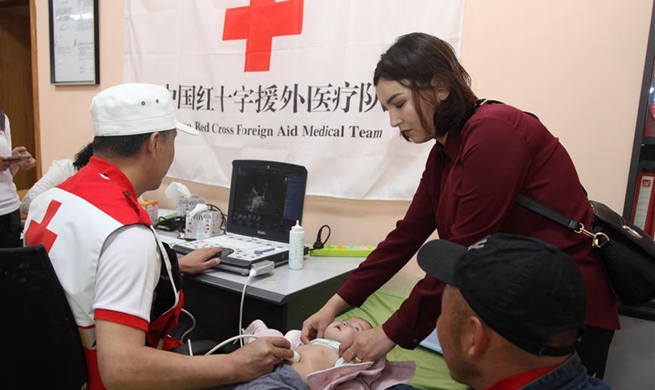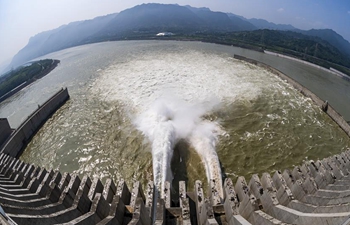GENEVA, June 25 (Xinhua) -- Despite progress made in food security, malnutrition amongst children in India remains high, the latest findings of a joint report have found, the World Food Programme (WFP) said Tuesday.
Herve Verhoosel, WFP spokesperson in Geneva, said at a UN briefing here that the 2019 National Food and Nutrition Security Analysis report, was developed in partnership between the World Food Programme (WFP) and the Indian government's Ministry of Statistics and Programme Implementation.
"The report is a first of its kind baseline analysis of the progress towards achieving Sustainable Development Goal 2: Zero Hunger, in India," said Verhoosel.
"Despite India becoming self-sufficient in foodgrain production with a large increase in the production of rice, wheat, and other cereals, the per capita availability of these grains has not increased at the same level due to inequality, population growth, food wastage and losses, and exports".
India's progress towards the sustainable development goal, with an overall population of 1.32 billion, will have a critical impact on the overall global success of reaching zero hunger, said the WFP spokesperson.
"The report indicates that despite positive trends and patterns in improving food security, malnutrition rates are well below acceptable levels," with many people, "especially women and children, suffering from micronutrient - Vitamin A, iron and iodine - deficiency."
The report finds that during the last decade, stunting, or impaired growth, has declined by one fifth in India with an annual decline of around one percent.
"This is still the slowest rate of decline amongst other emerging economies and most countries in Asia," said Verhoosel.
With a current stunting rate of over 30 percent across all states in India except for Kerala, which has already reached the target, the Indian government will have to double its rate of decline to 2 percent a year to meet the national goals of 25 percent by 2022.
With the current rate of reduction of 1 percent, 31.4 percent of children will be stunted in 2022.
Among the poorest 30 percent of the population, the average per capita consumption of energy is 1811 kilocalorie a day, which is much lower than the Indian Council of Medical Research norm of 2,155 kilocalories per day, said WFP.

















